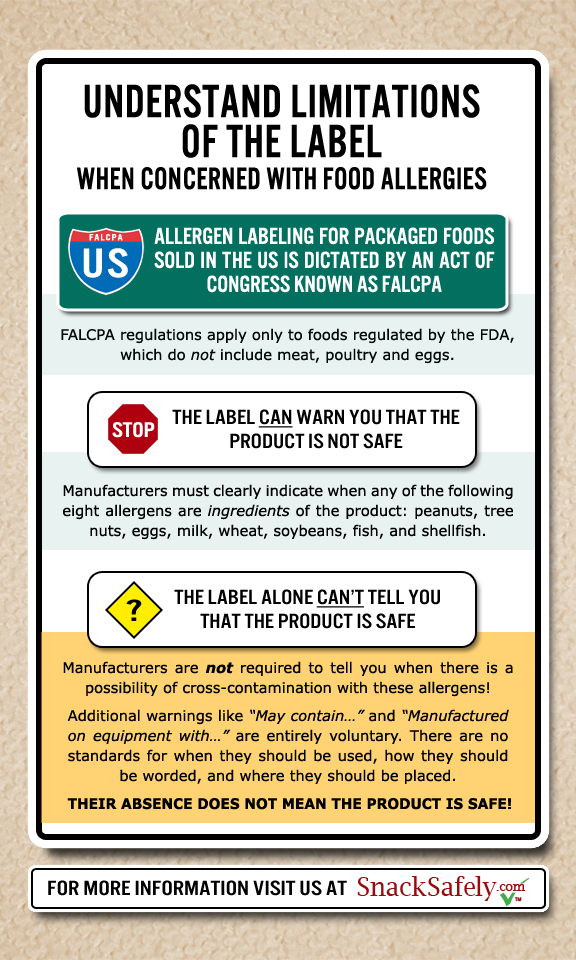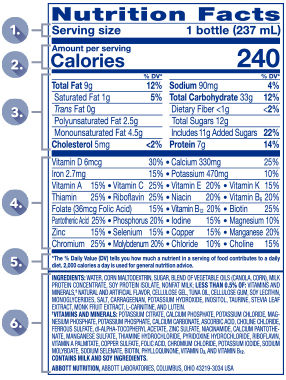43 understanding ingredients on food labels
Dietary Requirements | Vegetarian, Vegan & Cultural Diets By recognising and understanding shifts in specific modes of eating, you’ll be ready to adapt to the modern market in a way that is sure to reward you in more ways than one. 1. Allergies and Intolerances. Food sensitivities are on the rise all over the world, with no signs of stabilisation. There are various theories about why they are on the increase. Scientists and health … Understanding Food Labels - Food Ingredient Facts Food labels are required to list all ingredients contained in the food in descending order based on the amount found in the final product. Most food additives are therefore found toward the end of the ingredient list. This indicates they are used in very small amounts in the food, generally less than two percent of the product.
Easy Tips To Understand The Ingredient List On Food Labels Sugar, sodium and saturated and trans fats have a myriad of monikers. Sugar, for example, may appear as sugar, high fructose corn syrup, agave nectar, brown rice syrup, honey, molasses and a slew of words that end in "ose" (think glucose, fructose, maltose and galactose). Worried about sodium?
/person-lifting-milk-jug-from-dairy-aisle-shelf-693673429-5b2a66658e1b6e003e684b0d.jpg)
Understanding ingredients on food labels
Understanding Food Labels | Food & Water Watch Country of Origin Labels. For now, the United States requires Country of Origin Labeling (COOL) on chicken, seafood, produce and some nuts that tells us basic information about what country our food was produced in - but the food industry has limited even this most basic element of transparency. Until late 2015, beef and pork were also ... Understanding Food Nutrition Labels - American Heart Association When the Nutrition Facts label says a food contains "0 g" of trans fat, but includes "partially hydrogenated oil" in the ingredient list, it means the food contains some trans fat, but less than 0.5 grams per serving. So, if you eat more than one serving, you could end up eating too much trans fat. Understanding Food Labels - Nutrition: Science and Everyday Application The FDA uses the following definitions for interpreting the %DV on food labels:4 5%DV or less means the food is low in a nutrient. 10% to 19%DV means the food is a "good source" of a nutrient. 20%DV or greater means the food is high in a nutrient.
Understanding ingredients on food labels. Food Labeling & Nutrition | FDA Food labeling is required for most prepared foods, such as breads, cereals, canned and frozen foods, snacks, desserts, drinks, etc. Nutrition labeling for raw produce (fruits and vegetables) and... Ingredients & Food Science - Additives, Flavours, Starch Global Industry News. Lifestyle movement: Lonza Japan expands UC-II knee claims following positive trial findings from NutraIngredients-Asia.com; Experts offer first estimate of live microbes in food to move towards dietary recommendations from NutraIngredients-USA.com How to Understand and Use the Nutrition Facts Label | FDA Dietary fiber, vitamin D, calcium, iron ad potassium are nutrients on the label that Americans generally do not get the recommended amount of. They are identified as nutrients to get more of.... › food-safety › safe-food-handlingFood Product Dating | Food Safety and Inspection Service Oct 02, 2019 · The U.S. Department of Agriculture (USDA) does not require quality or food safety date labels for products under its purview. However, the USDA does require a "pack date" for poultry products and thermally processed, commercially sterile products to help identify product lots and facilitate trace-back activities in the event of an outbreak of ...
How to understand food labels - Eat For Health The Nutrition Information Panel on a food label offers the simplest and easiest way to choose foods with less saturated fat, salt (sodium), added sugars and kilojoules, and more fibre. It can also be used to decide how large one serve of a food group choice or discretionary food would be and whether it's worth the kilojoules. Food Product Dating | Food Safety and Inspection Service 02.10.2019 · 1 The U.S. Food and Drug Administration requires a “use by” date on infant formula.The U.S. Department of Agriculture (USDA) does not require quality or food safety date labels for products under its purview. However, the USDA does require a "pack date" for poultry products and thermally processed, commercially sterile products to help identify product lots … How To Read Food and Beverage Labels | National Institute on … 24.02.2022 · Understanding what’s in the foods and beverages we may consume can help us make healthier decisions.In many countries, including the United States, packaged foods and drinks — the types that come in cans, boxes, bottles, jars, and bags — include nutrition and ingredient information on their labels. Reading Food Labels | ADA - American Diabetes Association Understanding Food Labels. It’s time to decode those food claims. Trying to figure out nutritional information on labels and packaging isn’t easy. The good news is that we can help. Untangle packaging claims. If you get tripped up on food content claims, you’re not alone. Fat free vs. low fat vs. reduced fat. Low cholesterol vs. reduced cholesterol. It’s confusing, and it …
Sunscreen: How to Help Protect Your Skin from the Sun | FDA 08.11.2021 · Sunscreen ingredients. Every drug has active ingredients and inactive ingredients. In the case of sunscreen, active ingredients are the ones that are protecting your skin from the sun’s harmful ... How to Make Sense of Food Labels (Ingredients & Legislation) Food Packaging Science. label, scaling up. Labels on food generally have two very important functions: 1) make the product look appealing and make people want to buy it and 2) tell the (legal) details of your food. You both want to make sure people know what your product is, where it comes from, what it contains, as well as want to buy it. Easy Guide to Understanding Food Labels When You Have High ... - MyDoc Food labels tell you what is in the food and drinks you are consuming. Every packaged and processed product should have a food label to help you determine its nutrition content. The food labels can help you sieve through misleading claims, shop faster and make better food choices to lower your cholesterol levels. Today, some restaurants even have nutrition information … Understanding Ingredients on Food Labels - Professional Heart Daily ... There are many terms used for sugar on food labels. You might see sugar listed as the fourth ingredient in a product and think it's not so bad. But sugar can also be listed as high-fructose corn syrup or corn syrup, agave nectar, barley malt syrup or dehydrated cane juice, to name just a few. Read more about sugar and sweeteners.
› regulatory-information › search-fdaGuidance for Industry: Food Labeling Guide | FDA Questions concerning the labeling of food products may be directed to the Food Labeling and Standards Staff (HFS-820), Office of Nutrition, Labeling, and Dietary Supplements, Center for Food ...
Understanding Food Labels and Ingredient Lists: FAQs and Do's and Don'ts All ingredients that the food contains, including primary ingredients, added nutrients, flavors and spices, sweeteners, and additives, need to be listed on the ingredient label. There are some ingredients that have different origins or chemical forms but have the same impact on nutrition.
Understanding Ingredients In Food Labels | Eufic The quantity of a product's main or characterising ingredients must be declared, usually as a percentage, when the ingredient (or category of ingredient) appears in the name of the food, is normally associated with that food, or is given particular emphasis in the label (e.g. highlighted or pictured). Explaining ingredients
Understanding Food Labels - Nutrition: Science and Everyday Application The FDA uses the following definitions for interpreting the %DV on food labels:4 5%DV or less means the food is low in a nutrient. 10% to 19%DV means the food is a "good source" of a nutrient. 20%DV or greater means the food is high in a nutrient.
Understanding Food Nutrition Labels - American Heart Association When the Nutrition Facts label says a food contains "0 g" of trans fat, but includes "partially hydrogenated oil" in the ingredient list, it means the food contains some trans fat, but less than 0.5 grams per serving. So, if you eat more than one serving, you could end up eating too much trans fat.
Understanding Food Labels | Food & Water Watch Country of Origin Labels. For now, the United States requires Country of Origin Labeling (COOL) on chicken, seafood, produce and some nuts that tells us basic information about what country our food was produced in - but the food industry has limited even this most basic element of transparency. Until late 2015, beef and pork were also ...




Post a Comment for "43 understanding ingredients on food labels"